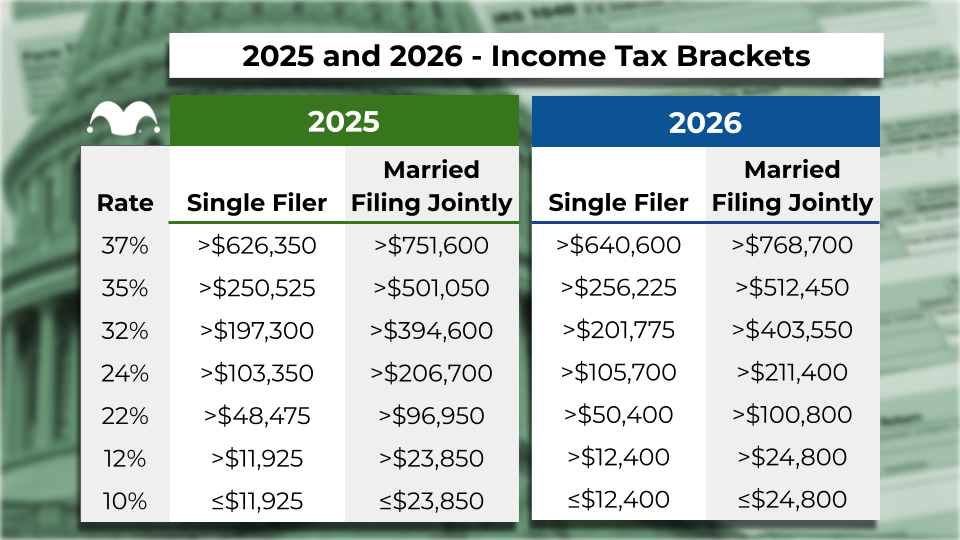The IRS has released the 2026 tax brackets, as well as the new standard deductions and several other inflation-related adjustments. Although the marginal tax rates have not changed, the new tax brackets could have a significant impact on the tax bills of top earners.
With that in mind, here's a rundown of the tax bracket changes and how they could affect high-income households for the 2026 tax year.
The new 2026 tax brackets and how they affect high earners
I won't keep you in suspense. Here's a comparison of the 2025 and 2026 tax brackets. As you can see, the marginal tax rates have not changed, but the income thresholds have been adjusted upward for inflation.

Image source: The Motley Fool.
It's also worth pointing out that these income amounts are taxable income, not everything you earn. Taxable income is the amount you have after you take your gross income and take all allowable deductions, many of which are increasing in 2026. For example, the standard deduction is increasing from $15,750 in 2025 for single taxpayers to $16,100. For married couples filing jointly, the standard deduction is rising from $31,500 to $32,200.
We'll get into an example in the next section. But the basic idea is that in 2026, slightly more of your income will be subject to taxes, and more of the income that is subject to federal income tax will be taxed at lower rates.
An example of how this works
To illustrate this, let's consider an example of a married couple filing a joint tax return that has an adjusted gross income (AGI) of $1,000,000. For simplicity, we'll assume that the couple takes the standard deduction, although higher earners are more likely to itemize deductions than the general public.
For the 2025 tax year, the standard deduction is $31,500 for a married couple, so this makes their taxable income $968,500. I'll spare you the mathematics, but using this amount of taxable income with the 2025 tax brackets produces a tax bill of $282,407.50 for the year.
Now, for 2026, the higher $32,200 standard deduction results in taxable income of $967,800 -- slightly less than in 2025. Applying this to the new income thresholds in the 2026 tax brackets shows a tax of $280,250.50.
In a nutshell, a couple with a million-dollar AGI would pay $2,157 less in the 2026 tax year, with all other factors remaining the same.
Of course, this example makes some big assumptions that may or may not apply to you. Most significantly, it assumes that your income will be the same in 2025 and 2026. If you get a raise or otherwise earn more, your tax bill could certainly go up (although most would see this as a good problem to have). But the point is that with all other factors being equal, the new tax brackets could lower the amount of tax high earners pay.
Tax brackets are just part of the story
Finally, it's worth emphasizing that tax brackets are just part of the formula that determines how much you'll owe. There are other deductions available, including some you can take whether you itemize or not. For example, retirement account contribution limits are also expected to rise in 2026, so higher earners can potentially lower their taxable income in that way.
There are also tax credits, some of which are available to high earners, as well as deductions and tax benefits for self-employed high earners. And for those who do itemize deductions, higher earners can potentially contribute more to charity or make other strategic moves to lower their tax bill in a given year.
The bottom line is that the 2026 tax brackets can have a significant impact on the tax bills of higher-earning Americans before all other factors are considered.